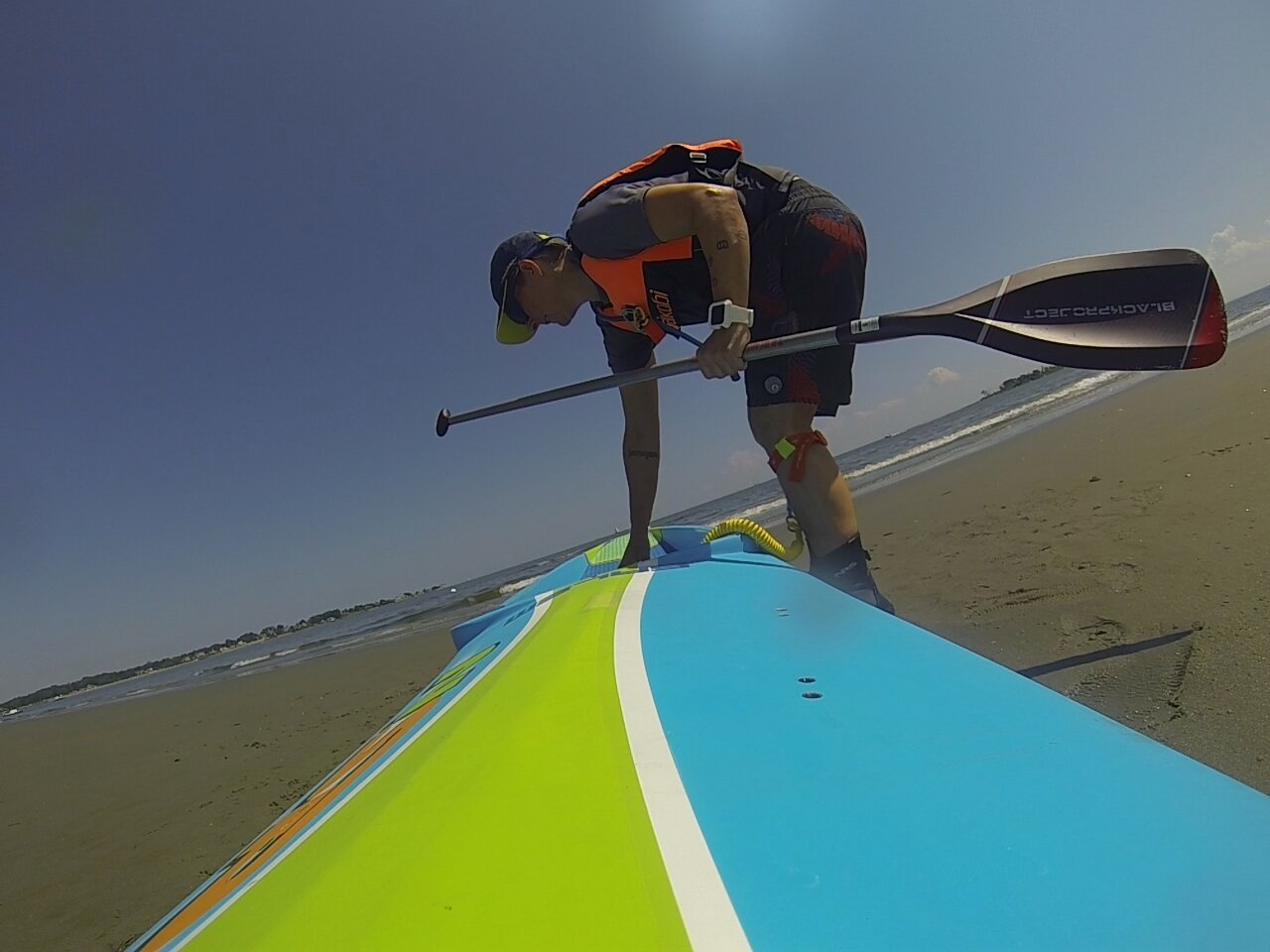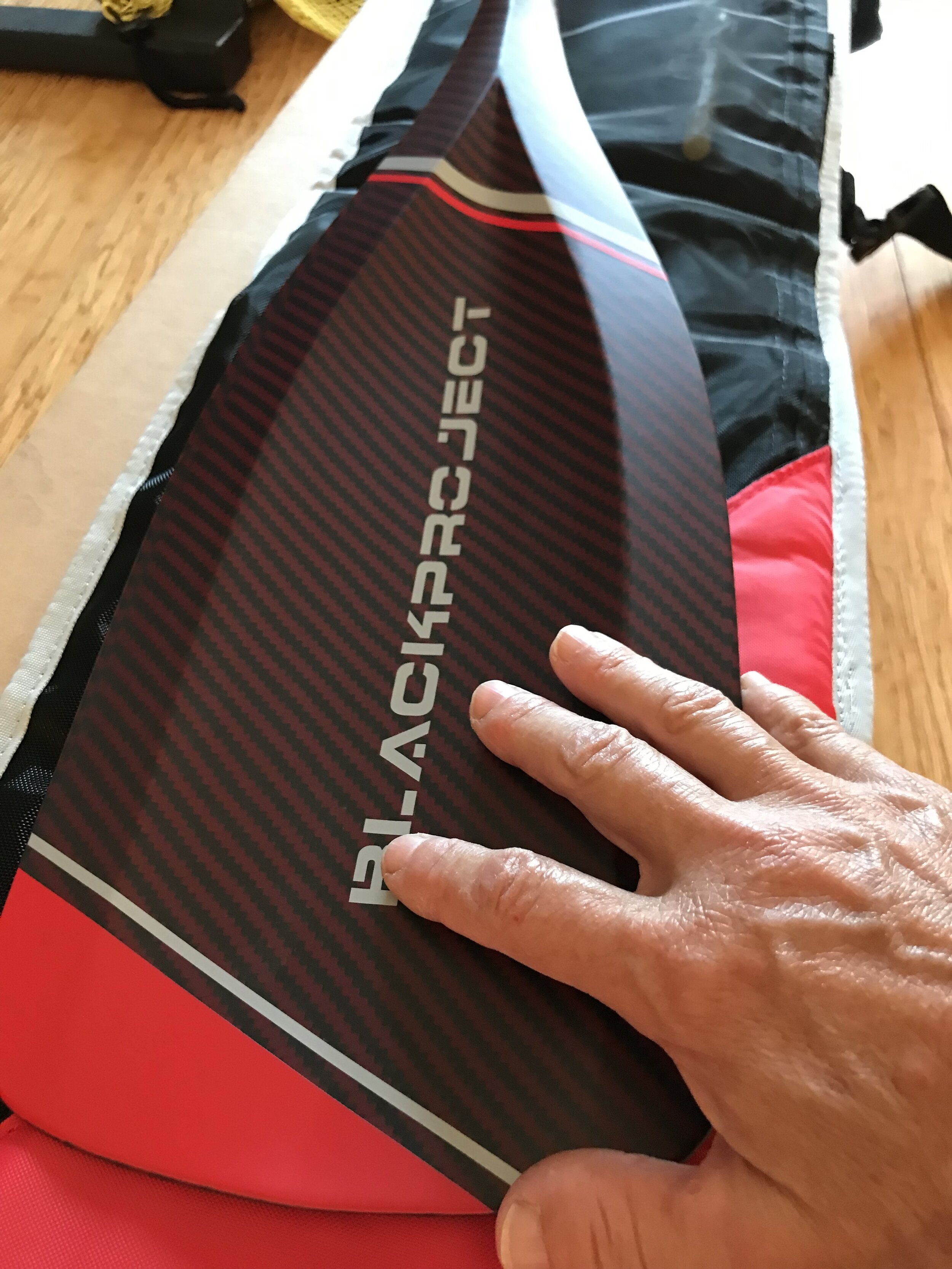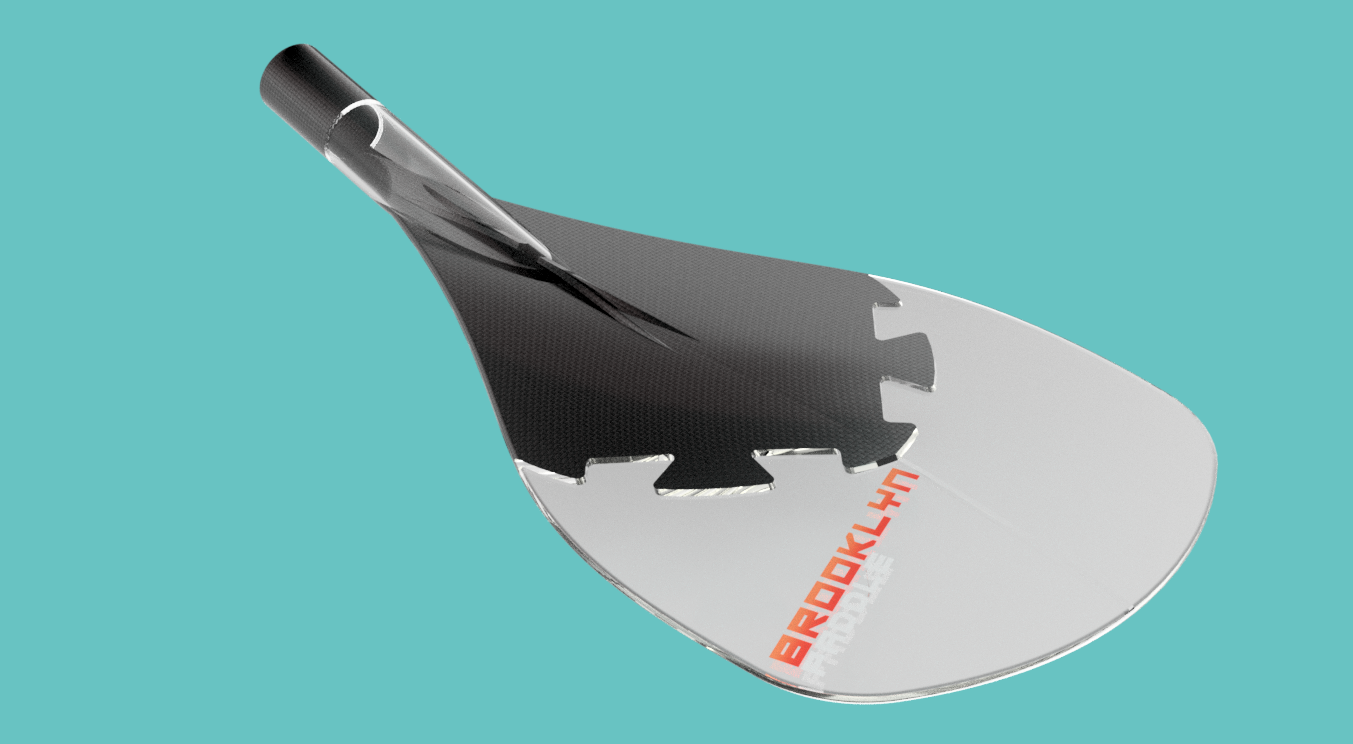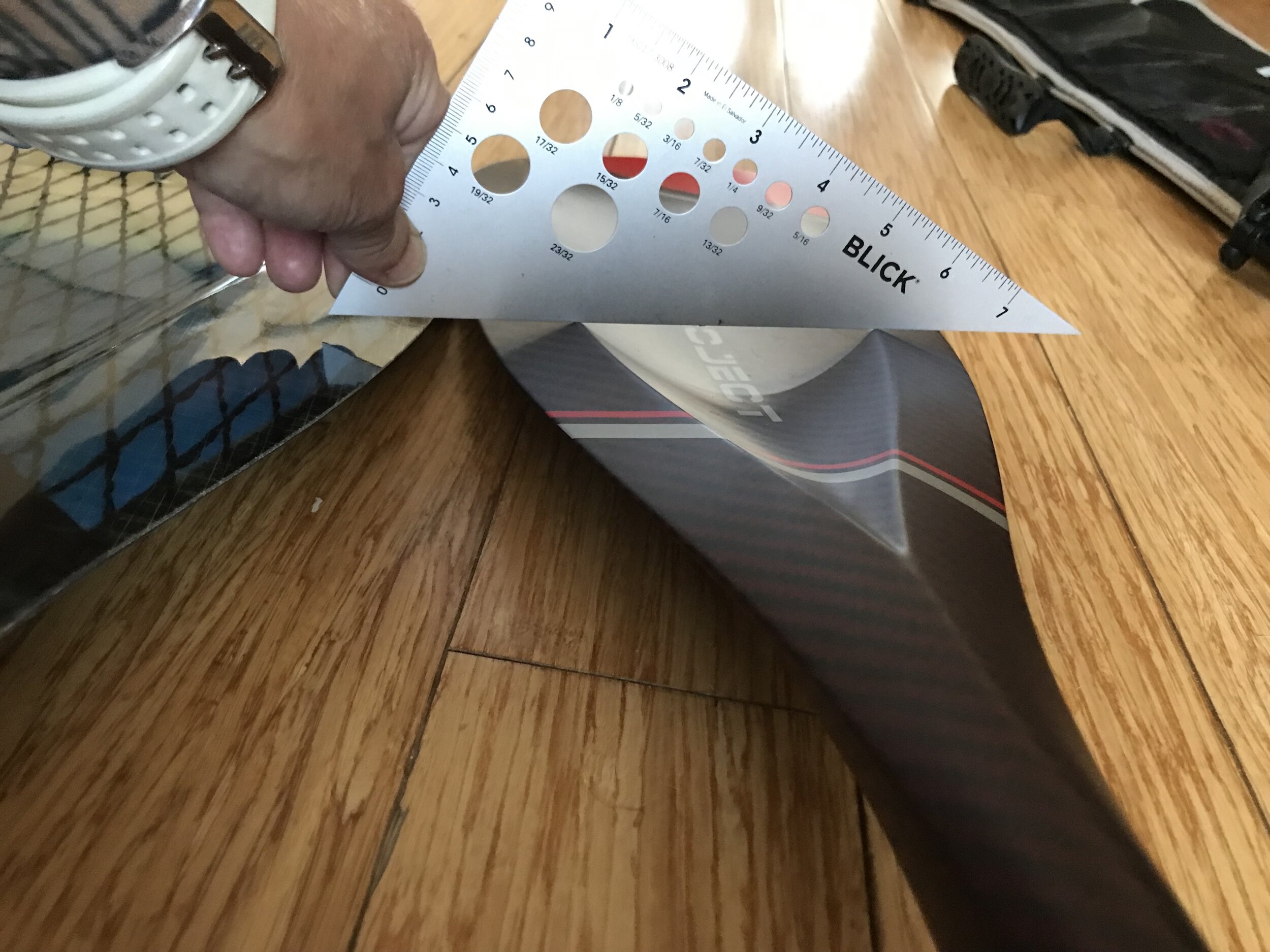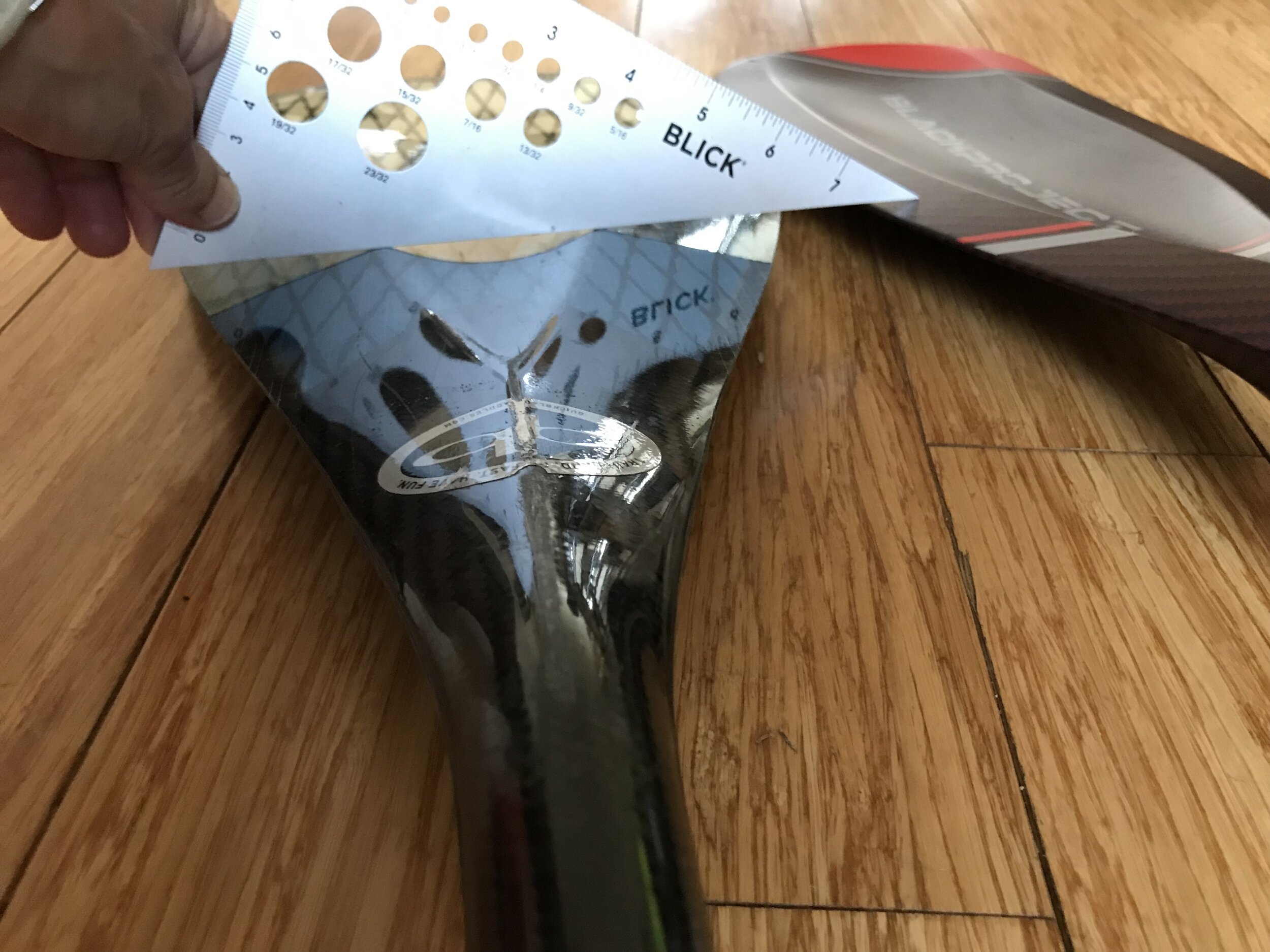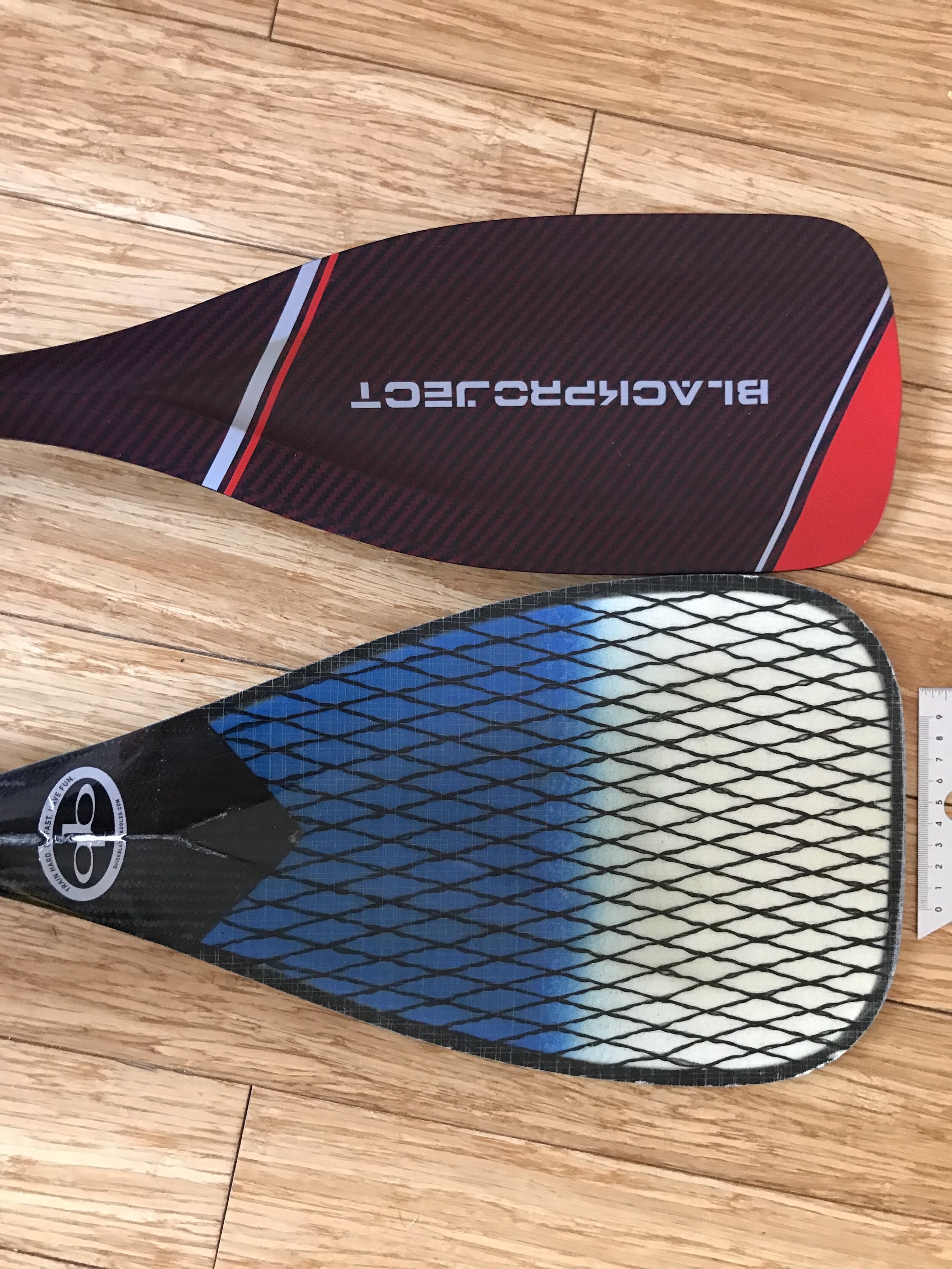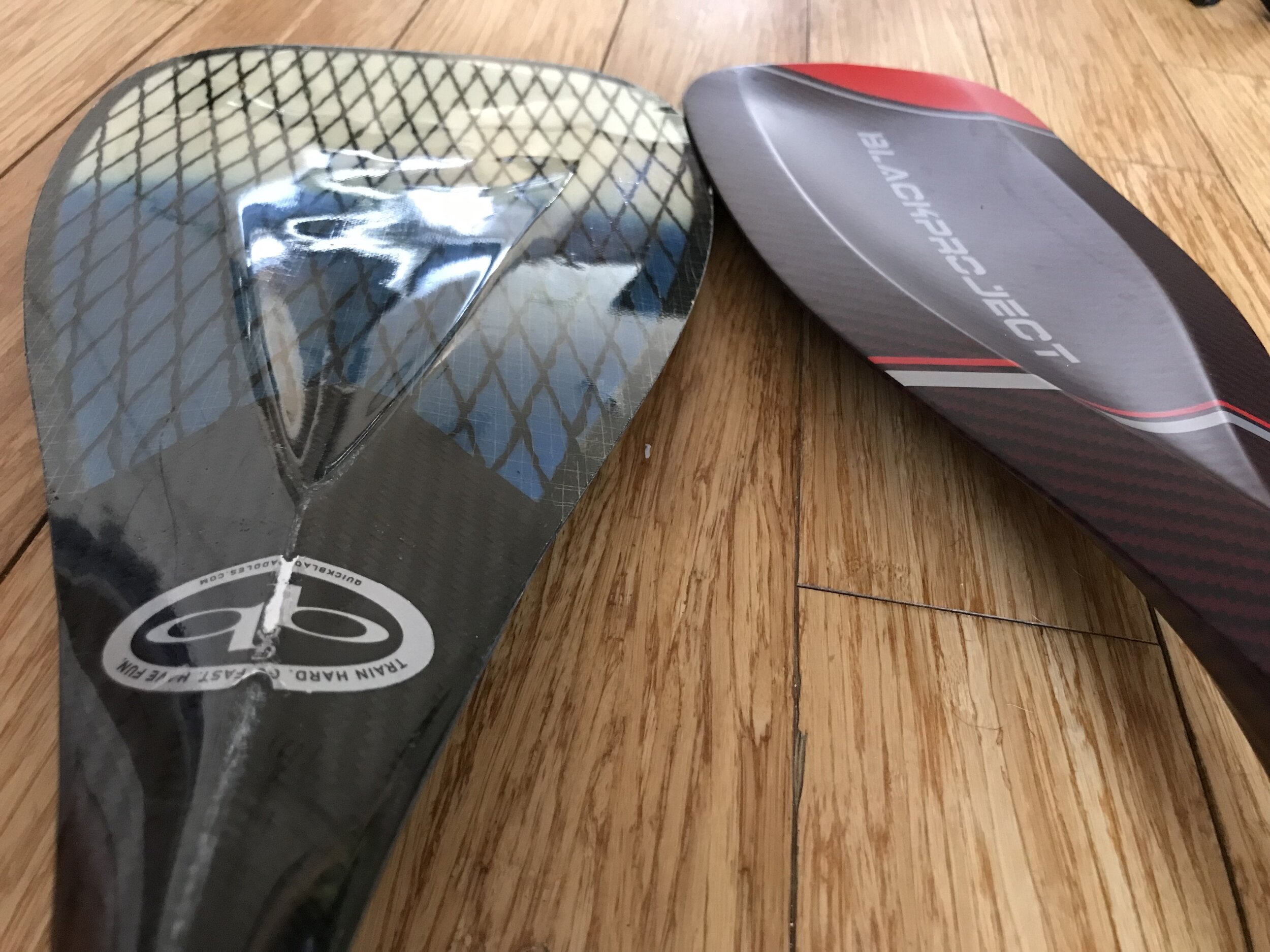IT CAME FROM MAUI!
The Black Project Hydro FlowX sounds like a name for rocket fuel. It looks like it fell to the ocean from a rocket launch and also looks like a paddle within a paddle. I had purchased my NSP Sonic SUP last summer as an alternate to spending money on travel during the pandemic, but was only able to purchase a very cheap and very heavy adjustable paddle from a sporting good chain to get me started. I was also spending more time in my Nelo Surfski and my go to Puakea Kahele outrigger canoe, and the SUP was getting neglected. So, I decided to sign up for a clinic with April Zilg at the Cayuga Lake Cup Race in the finger lakes region of upstate New York in August. Nothing like knowing you will spend a couple of hours with a world pro to get a paddler salivating for personal improvement on the water. But was I really going to go with a paddle that weighed as much as my SUP? (At least that’s how it felt to my shoulders).
I downwind paddle as much as possible. I picked up the brace stroke from Oscar Chalupsky for surfski in 2018 and immediately applied it to outrigger paddling. Spending more time on the surfski this year, the brace came automatically, and when I got back on the SUP this summer, I found myself throwing the paddle out to brace in the surf for stability. My NSP Sonic is a downwind board, and usually I paddle against the wind or surf then turn around to zoom back to shore. Not that I have much of an idea what I’m doing, but my local waters do get considerable medium sized surf and breakers, which are fairly optimal for a novice surfer such as myself. This is a long preamble to how I discovered Black Project paddles in the first place.
Yes, I’d followed Quickblade’s SUP series and also Hippostick’s, but these are made by crossover athletes who also make outrigger paddles. I own a QuickBlade V111 that I absolutely love, especially for downwind (and upwind). I was also familiar with ZRE’s SUP, and I also own a 10oz ZRE outrigger paddle. But when I searched for SUP surf paddle, I was coming up empty. With all price points at $500 USD, which of these carbon beauties was I going to buy? After a series of searches I came upon some minimalist SUP thread where someone suggested Black Project for surf. Since Black Project does not make paddles for outrigger, the brand was not on my radar. Well, it is now. There isn’t any spectacular footage in the video, it’s just my first time out with it. What a difference. If your eyes are glazing here, and you just want to know if the Hydro FlowX shaved a minute off my paddle time, then the answer is yes. Sure. This paddle feels like it weighs nothing, the side to side transfer is a weightless breeze, the power is incredible, and the steering agility was surprising. Love it.
The rest of this article will get rather technical and speculative. Read on if you dare…
A few years ago I decided to 3D print a paddle blade. Or 1190 days ago according to the internet record on SimScale, where I uploaded a model of my blade design and attempted to simulate what happens to water flow around the paddle blade. I’m a better technician than I am a paddler, and while overthinking water flow can certainly distract from the beauty of paddling in my local ocean, we wouldn’t have rockets if people didn’t overthink how to technically overcome gravity. I had not set out 1190 days ago to invent a rocket paddle. I was actually curious about how much of a spoon shape could be incorporated into a paddle. I was thinking about webbed feet and wondering if a webbed paddle might be a logical solution. I also think the days of carbon lay-up are in the sunset and 3D prototyping and printing on a larger scale will be here faster than you can say “internet.” And I did indeed 3D print my paddle, which was called, 1190 days ago, the Brooklyn Paddle, since I lived in Brooklyn and paddled on the Hudson River and in the New York Harbor.
I spent countless hours learning to model the complex inner and outer curves of a paddle blade (using Fusion360 if you’re interested). And this is where the technical design of a paddle really gets into, let’s call it, flow. As a downwind paddler, I spend a lot of time paddling upwind also, so I need a blade that can really pull the boat (or SUP or surfski) past the blade. The blade must also be very quick in and out of the water on the downwind attacks. (Ducks are no longer my model here because as much as they might upwind, I’ve yet to see one actively surfing). Yet it was the ducky V-indentation on the QuickBlade V111 that first got me interested in that paddle, along with its flatter bottom.
Pictured above are the conditions I love, and the ones I aim to graduate to with my SUP. The indentation in the Hydro FlowX (or DPS “deep power scoop” as Black Project calls it), immediately reminded me of the QB V111 indentation as well as my early attempts to make a paddle with a flatter bottom edge and deeper spoon. But what is really amazing is how small the blade is. How in the world can I be so far from the blade and get so much power out of it? How in the world did I suddenly get a steering paddle in such a small package? Enter the paddling and engineering duo behind Black Project of Chris Freeman and Tom Hammerton. As soon as I landed on their website and was able to scroll through line after line of technical data about the different paddles, I was hooked. I went through their step-by-step how to choose a SUP paddle guide and really felt I had the information I needed for sizing. However, at this point, since SUP is what I spend the least of my paddle time on, I thought I would go with the Lava, an all around paddle with a slightly lower price point. However, the clinic with April Zilg was pending, and I knew I had the option either to relegate SUP to hobby or to take it to where I take the rest of my paddling: the surf!
“Paddle=Board. Both are equal.”
Really, why have a fancy downwind SUP and not go all in with the paddle? The paddle is half the sport isn’t it? I read every single review I could find of the Hydro FlowX (which were maybe two total) and reread them. The more I scrolled through the data on the Black Project website, the more I realized this was a truly engineered project. These were geeks like me, in love with the ocean and willing to apply math and physics to it. Below is an image I got trying to model flow around my 3D paddle concept before I printed it.
You can basically see how the paddle slices into the water and some volume flows up past the blade and over the top. The hole is where the handle connects. If you add the ridge and peak onto the top of the handle, like Black Project did with the Hydro FlowX, that is going to change. The water is both going to flow up and also be held like ice cream in the scoop. Does any of this, stroke by stroke, need to be visualized to make us faster paddlers? Maybe. Like nature we need to be master adapters. If, when we put the blade in the water, our body is more comfortable, we have more power and more steering agility, then the technical analysis pays off.
Black Project hails the Hydro FlowX as the first 3D paddle. Of course all paddles are 3D, but this one has volume, which means the water is getting displaced while the blade slices in, and the water is flowing into the scoop in that instant of forward thrust. And this is great food for thought, but as I ran my credit card through for the Hydro FlowX, I thought it best to send a query to Black Project. After all, what do I know about SUP paddles? I was also anxious that the paddle get to me on time for the clinic with April Zilg. I got a call from Maui not long afterwards, and the next day Chris Freeman and I spoke. He suggested I take a look at his article Smaller, Softer, Shorter, which you can read by clicking on that link. I was already aware that downwinders could benefit from a smaller paddle, and Woo had a small paddle for us to try at downwind camp in 2020, just before everything got shut down due to the pandemic. I think we may have tried this one, which they sell as an emergency paddle. Let’s focus now on smaller. How small could we get?
SMALLER
So how is it that I am so far from the blade on a SUP, yet have so much power with such a small blade? Why are SUP blades smaller? Possibly there remains the mentality that bigger is better. I can definitely state that my coaches are all in principle agreement (that is the ones like Guy Ringrave and, as I’d find out, April Zilg) that a long stroke is not necessary. And yet you hear the chant all the time in outrigger paddling: long and strong! I’ve literally had a SUP paddler call out to me I should try a bigger blade. As I paddle more and more downwind, blessed by conditions from tropical Atlantic Ocean storms, my QuickBlade V111 starts to feel sluggish on the catch. The waves are moving so fast, I can literally feel the canoe slowing down when the blade enters the water. Subsequently I don’t bother trying to bury the blade or even stroke from my toes to my hips. It’s more of a knee to thigh explosion to position the bow at the bottom of the wave trough. This same explosion comes naturally with the Hydro FlowX. For surfski, with its two-blade wing-spoon, a couple of quick powerful grabs are required (and I’ve a long way to go at that!). But the surfski blades are also small. Why is the outrigger blade so big by comparison? All I can say is I wish I had another $500 to gamble and to have Black Project make me a super short, outrigger length version of the Hydro FlowX so I could find out.
Be safe, and see you on the water!

